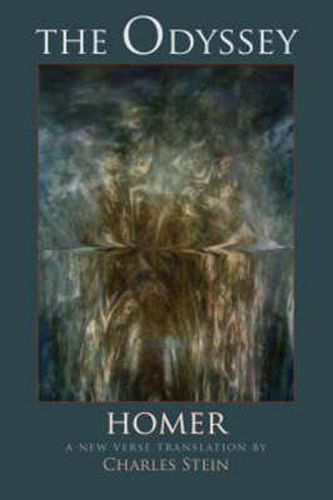Readings Newsletter
Become a Readings Member to make your shopping experience even easier.
Sign in or sign up for free!
You’re not far away from qualifying for FREE standard shipping within Australia
You’ve qualified for FREE standard shipping within Australia
The cart is loading…






The Homeric text that we have is written in what became the standard verse form for high-serious composition in the classical world. Yet certain recent scholars have speculated that the oral composition of the poem in its early form may have been written with a phrase-by-phrase prosody, not the formal line that culminated the tradition. The prosody borrowed from the Black Mountain poets harken back to this possibility, and thus allow the translator to find unexpected links to the earliest strata of Homeric verse. The famous episodes - the sirens, Scylla and Charibdys, the Cyclops - are translated with great energy and sympathy, making the ‘action’ aspects of the poem palpably accessible and engaging.The second half of the poem - where Odysseus, having returned to his native land, prepares to take revenge on the wooers of his wife - is shown to have extraordinarily subtle, ‘novelistic’ features, which are made transparent in this translation. There is also a special feel for the ‘archaic’ dimensions of Homer - the world of gods and their complex relations to Fate and Being that other translators tend to de-emphasize in order to make the poem feel ‘modern’. It is often claimed that the Homeric world excludes or minimizes the ‘magical’ and is for this reason fit to be the first great work of the modern world. The translator takes the opposite approach: the spirit of a universe prior to the classical shines through everywhere. Stein feels we read Homer not only to learn what the Greeks thought about the gods - but to learn about the gods themselves!
$9.00 standard shipping within Australia
FREE standard shipping within Australia for orders over $100.00
Express & International shipping calculated at checkout
Stock availability can be subject to change without notice. We recommend calling the shop or contacting our online team to check availability of low stock items. Please see our Shopping Online page for more details.
The Homeric text that we have is written in what became the standard verse form for high-serious composition in the classical world. Yet certain recent scholars have speculated that the oral composition of the poem in its early form may have been written with a phrase-by-phrase prosody, not the formal line that culminated the tradition. The prosody borrowed from the Black Mountain poets harken back to this possibility, and thus allow the translator to find unexpected links to the earliest strata of Homeric verse. The famous episodes - the sirens, Scylla and Charibdys, the Cyclops - are translated with great energy and sympathy, making the ‘action’ aspects of the poem palpably accessible and engaging.The second half of the poem - where Odysseus, having returned to his native land, prepares to take revenge on the wooers of his wife - is shown to have extraordinarily subtle, ‘novelistic’ features, which are made transparent in this translation. There is also a special feel for the ‘archaic’ dimensions of Homer - the world of gods and their complex relations to Fate and Being that other translators tend to de-emphasize in order to make the poem feel ‘modern’. It is often claimed that the Homeric world excludes or minimizes the ‘magical’ and is for this reason fit to be the first great work of the modern world. The translator takes the opposite approach: the spirit of a universe prior to the classical shines through everywhere. Stein feels we read Homer not only to learn what the Greeks thought about the gods - but to learn about the gods themselves!